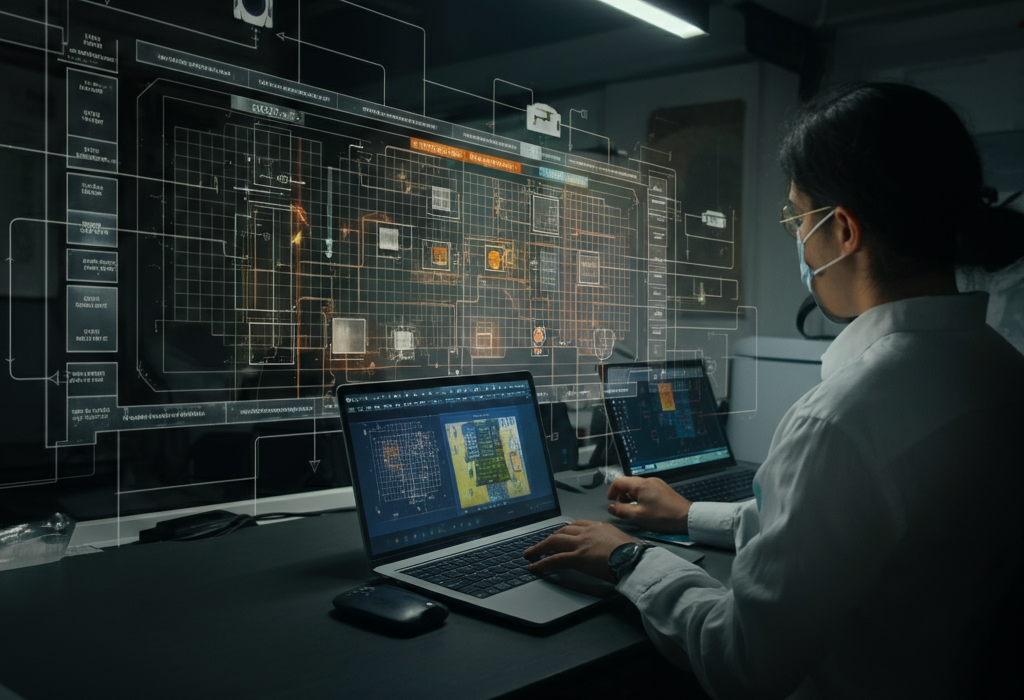I’ve had thought-provoking conversations with several CIOs about the critical role of data quality in AI-driven decision-making. A recurring theme in these discussions is the detrimental impact of poor data quality, which can severely undermine the success of AI initiatives and highlight an urgent need for improvement. Many organizations are leveraging Large Language Models (LLMs) to analyze data from business systems—uncovering patterns, detecting anomalies, and guiding decisions. However, when the input data is inconsistent or inaccurate, the insights generated become unreliable, diminishing the value these powerful models can deliver.
What is a Large Language Model
I’ve discussed LLMs in previous posts, but in case you missed them, here’s a clear definition of what an LLM is: it’s an AI model trained on a vast amount of text and data, allowing it to understand language and make predictions based on the patterns it has learned. This sophisticated technology is being used in various applications such as natural language processing, sentiment analysis, translation services, chatbots, and more.
The Critical Role of Data Quality
The importance of data quality in AI can’t be understated. The foundation of any successful AI initiative lies in clean, accurate, and reliable data. High-quality data is essential for LLMs to generate actionable and trustworthy insights. However, ensuring data quality is not a task that should rest solely on the shoulders of CIOs and their technical teams. Collaboration with key business users—those who deeply understand the context and purpose of the data—is crucial. So, these stakeholders play an integral role in identifying inaccuracies, resolving ambiguities, and refining data to yield meaningful results.
While the process of data cleansing can be meticulous and time-consuming, it is an indispensable step in delivering dependable outputs from LLMs. However, some CIOs have explored using LLMs themselves to assist in data cleaning, and while this approach can be effective in certain scenarios, it is not a universal solution. For nuanced, high-stakes datasets—such as patient medical records or sensitive financial data—there is no substitute for human expertise. Professionals with a comprehensive understanding of the data must review and validate it to ensure accuracy and integrity. Therefore, human oversight remains critical, particularly when handling complex or sensitive information.
Risks of Poor Data Quality
Neglecting data quality can lead to significant consequences, including:
- Inaccurate Insights: Low-quality data undermines an LLM’s ability to identify patterns or detect anomalies, leading to flawed and unreliable insights. This can compromise decisions based on these outputs.
- Wasted Resources: Using poor data as input for AI models often results in incorrect conclusions, requiring additional time and resources to correct mistakes. This inefficiency can delay progress and inflate costs.
- Erosion of Trust: Stakeholders—whether customers, employees, or shareholders—rely on the credibility of AI systems. Poor data quality damages this trust by producing inaccurate results that undermine the system’s reliability.
- Missed Opportunities: High-quality data is essential for identifying growth opportunities and strategic advantages. Poor data quality can obscure insights, causing organizations to miss critical chances to innovate or gain a competitive edge.
- Compliance and Legal Risks: Industries like healthcare and finance operate under stringent regulations for data use and handling. Poor data quality can lead to non-compliance, legal repercussions, hefty fines, and reputational damage.
Investing in data quality is not merely a technical necessity—it is a strategic imperative. By prioritizing collaboration, leveraging human expertise, and maintaining rigorous oversight, organizations can ensure their AI systems deliver accurate, reliable, and impactful results.
Best Practices for Data Cleansing
A structured approach to data cleansing is critical for achieving a high level of data quality. One of the most effective methods is implementing a robust data mapping framework. So, start by thoroughly analyzing your data to identify inconsistencies and gaps. Next, define a clear target repository to store the cleaned and refined information. Leveraging ELT (Extract, Load, Transform) processes allows you to refine data directly within its source environment, ensuring consistency and supporting real-time updates—an essential advantage in today’s fast-paced, data-driven decision-making landscape.
Therefore, quality assurance should be woven into every stage of the cleansing process. Automated validation tools, combined with manual reviews by subject matter experts, can effectively identify and address errors. Engaging business end users, who possess deep knowledge of the data’s context, is vital for maintaining both accuracy and relevance. Additionally, establishing a feedback loop between AI systems and data sources can help detect recurring issues and prioritize areas that need improvement. This iterative process not only enhances data quality but also strengthens the reliability and effectiveness of AI-driven insights over time.
Steps for Effective Data Cleansing
- Identify Key Stakeholders: Collaborate with business users, data specialists, and technical teams to ensure a thorough understanding of the data and its context.
- Analyze Your Data: Use automated tools to detect inconsistencies and compare source data against external benchmarks for validation.
- Define a Target Repository: Designate a centralized location for storing clean, refined data to promote consistency and accessibility.
- Leverage ELT Processes: Extract, Load, Transform methods enable in-source data refinement, minimizing errors and supporting real-time updates.
- Implement Quality Assurance: Combine automated validation tools with expert manual reviews to efficiently identify and resolve data issues.
- Establish a Feedback Loop: Continuously monitor data quality by using insights from AI systems to highlight recurring errors and inform areas for improvement.
So, by prioritizing data quality and fostering collaboration between technical teams and business stakeholders, organizations can unlock the full potential of their data assets. Clean, reliable data serves as the cornerstone for informed decision-making and drives impactful outcomes in today’s AI-powered world. So, this commitment to quality ensures that large language models and other advanced technologies deliver meaningful, actionable insights.
The Importance of Collaboration
Collaboration across departments is key to maintaining high-quality data. Therefore, CIOs must work closely with business leaders to establish clear data governance policies that define roles, responsibilities, and processes. Open communication between IT teams and business units ensures potential data issues are identified early and addressed efficiently, creating a seamless and effective data cleansing workflow.
Building Strong Data Governance
Establishing robust data governance policies is critical for sustaining long-term data quality. So, these policies should include clear guidelines for data management, regular audits, and routine quality checks. Treating data quality as a continuous priority, rather than a one-time task, creates a strong foundation for successful AI initiatives. Therefore, strong data governance not only enhances operational performance but also supports better decision-making, improved outcomes, and personalized customer experiences.
Transparency and Ethical Considerations
As organizations integrate AI and LLMs into decision-making, transparency and ethical responsibility become paramount. So, it’s not enough to clean the data; businesses must also understand how LLMs generate insights and make decisions. By employing interpretability techniques, organizations can uncover the logic behind AI-driven outcomes. Therefore, this improves trust in the models, delivers actionable insights, and fosters continuous improvement.
Investing in data quality yields organization-wide benefits. Reliable data supports sharper insights, enabling smarter decisions and superior business outcomes. High-quality data also allows LLMs to achieve their full potential, offering organizations a competitive advantage in today’s AI-driven world. Yet, with great power comes great responsibility. Ethical considerations must remain central, as LLMs process vast amounts of data that could inadvertently reinforce biases or lead to misaligned decisions. Organizations must actively monitor and address these risks, ensuring fairness, accountability, and ethical integrity.
Conclusion
In conclusion, data quality is the cornerstone of successful AI initiatives powered by LLMs. To harness the transformative potential of these tools, organizations must engage business users in the data-cleansing process, implement strong governance frameworks, and prioritize transparency and explainability. By investing in these efforts, businesses can unlock innovation, drive growth, and ensure ethical decision-making.
So, the path forward lies in consistently refining data and advancing data quality management. With the right strategies, organizations can ensure AI-driven decisions are accurate, reliable, and impactful—paving the way for a future where LLMs reshape the way businesses operate and innovate.





